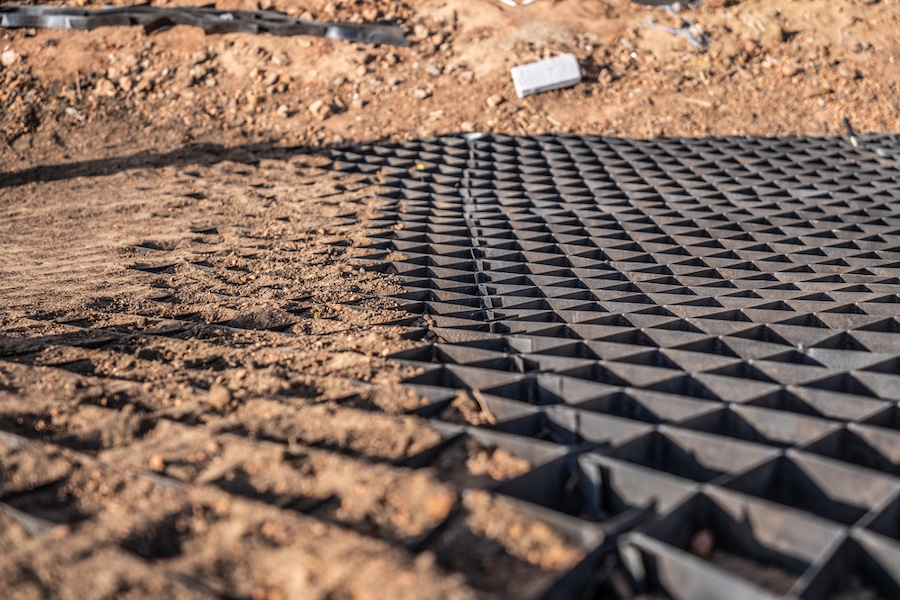Soil stabilization is a step taken early in the construction process in which the surface of a new road or building is reinforced to more adequately bear weight. Depending on your location and construction needs, this can be a relatively simple or involved process.
Many options currently exist for stabilizing soil ranging from chemical to mechanical solutions. In this article we will discuss some of the most common methods of stabilizing social before a project and why it’s the most important step in your construction process.
Unstable Soil and Why It Matters
To begin, it’s important that we know what soil stabilization entails.
Soil itself is similar to a living organism– its location and materials will create different physical and chemical structures within the soil which influences the base stability of your soil. This is why soil found in two different locations will often have very different pre-construction needs.
Some soils tend to be loose and poorly compacted or are composed of small and unreliable particles (such as sand). These types of compositions are vulnerable to shifting under pressure or eroding during rainy weather conditions. Likewise, some soil compositions can be prone to over compaction, leaving to poor drainage and puddling.
Furthermore, areas with clay-based soil can have a whole different component of weather challenges: swelling. Swelling causes great instability which can result in a total loss of structural integrity leading to cracking and buckling of the structures using this type of ground for support.
In any of the above cases, the main takeaway is that poor soil stabilization leads to poor structural stabilization overall. The more structural challenges in a given project, the more likely serious consequences will later arise.
What is Soil Stabilization?
Soil stabilization is a process where you assess your ground type and compensate for its weakness. This can be done by either chemical means, mechanical means, or both, depending on your starting soil and proposed project.
Generally speaking, soil stabilization will be one of your earliest steps in construction. This is because whether you are building a home or a road, you want the foundation to be as secure as possible. Not only will this ensure the longevity of your structure, it will cause less headaches throughout your construction process.
Stabilization Options
While unstable soil is uncommon, the good news is that it’s a relatively easy problem to fix.
Chemical
Chemical stabilization is the addition of secondary materials or components to an already existing substrate in order to change its performance, density, and ability to support weight. Depending on the individual weaknesses you are faced with your construction site, these materials can include anything from cement, lime, or even fly ash.
Mechanical
Mechanical stabilization is anything which utilizes either external force or reinforcement to stabilize the ground. In the most basic sense, this can include physically pressing the surface of the soil with a roller or weight to physically pound the materials into a compact state. This gives a greater level of solidity and rigidity to the existing substrate. Unfortunately, it’s not always the best choice depending on materials and needed longevity.
A more lasting reliable way in which soil can be mechanically reinforced is through the use of geotechnology.
Geotechnology is an umbrella term for several types of materials, either flexible or rigid, that are placed within a layer of substrate to lend support. There are three main types of geo-materials used in soil stabilization, each with their own specific set of strengths.
Geotextiles are the thinnest and most flexible of the materials. These can be used to provide tooth and grip to a substrate or help hold down top layers that are prone to shifting.
Geogrids are similar to geotextiles in that they are relatively thin and flexible. However, because geogrids are a bit more robust than their fabric counterparts, they can provide additional support to holding a material in place. Furthermore, they can be stacked on top of one another to provide for an even stronger reinforcement system.
Finally there are Geocells, the more rigid, deep, and structurally supportive of the three. These cells are three dimensional interlocking pockets which hold substrate from all sides, providing unparalleled vertical support to even soft substrates in addition to added protection against shifting, compaction, erosion, or necessary maintenance over time.
When looking to reinforce the ground, individuals will usually find themselves picking between one of the available geotechnologies based on budget and support needs. Most commonly, geocells and geogrids are the final contenders for their all-around durability and ease of use.
If you are interested in a more in-depth look on the differences and uses of these materials, check out our article on geocells vs. geogrids. This comprehensive look will help take you a step in the right direction.
How Performance Footing Can Help
As a family-owned, Arizona-based vendor of geocell technologies, Performance Footing is proud to offer unparalleled service and pricing for your project needs. Either purchase directly from the box below or give us a call with any question you might have at (877) 835-0878.
Have a question? Don’t hesitate to reach out and we will help point you in the right direction.
